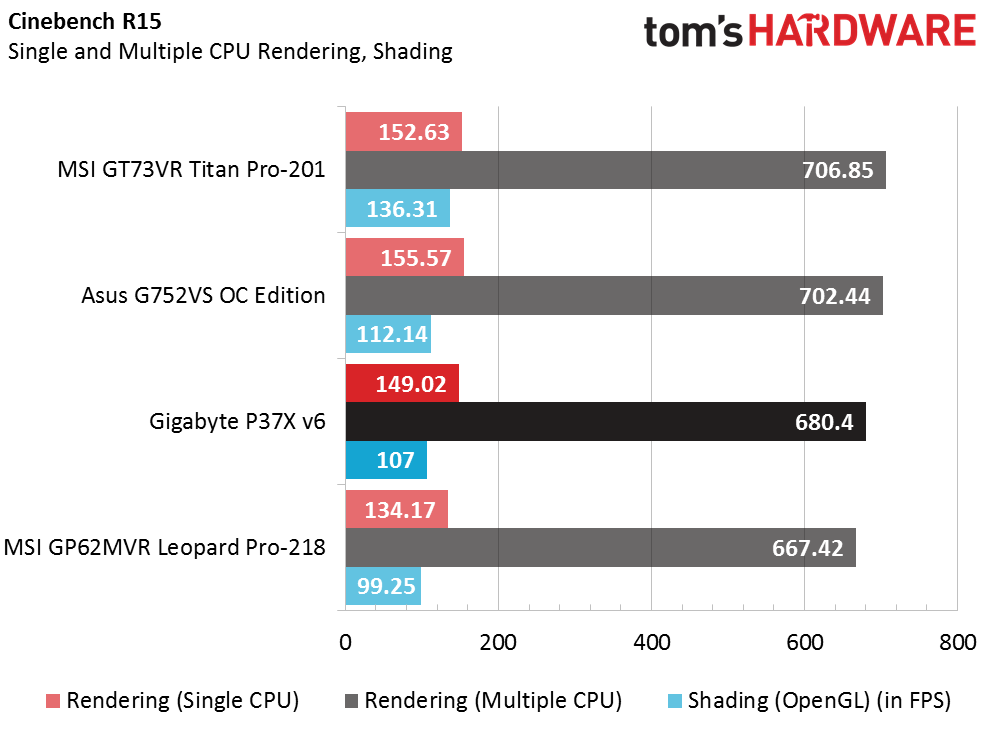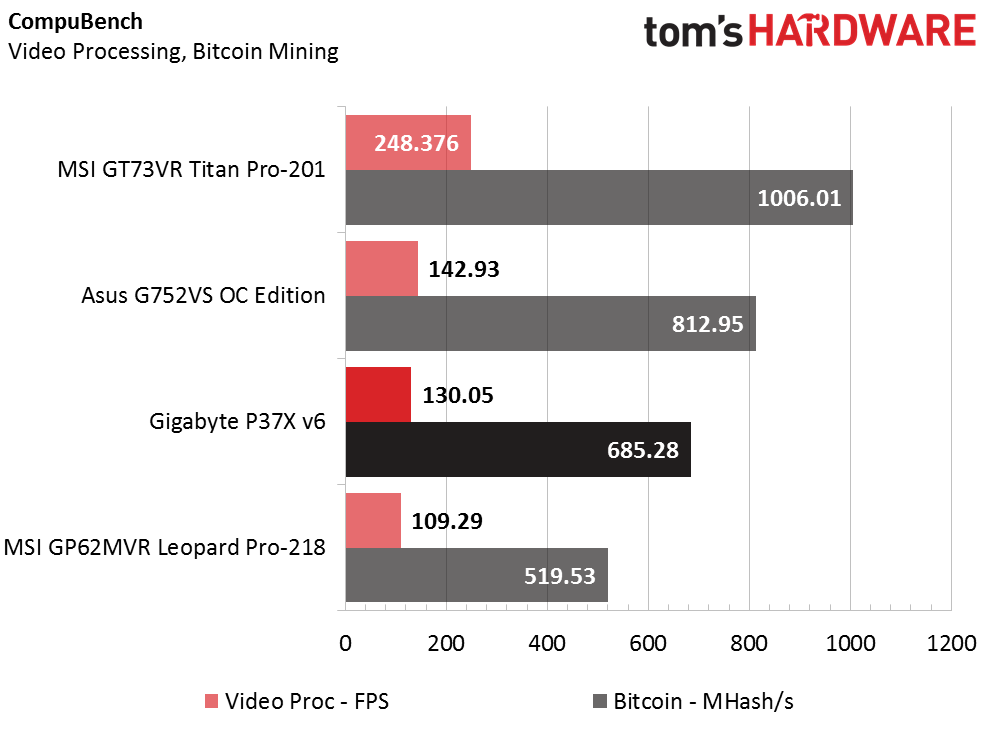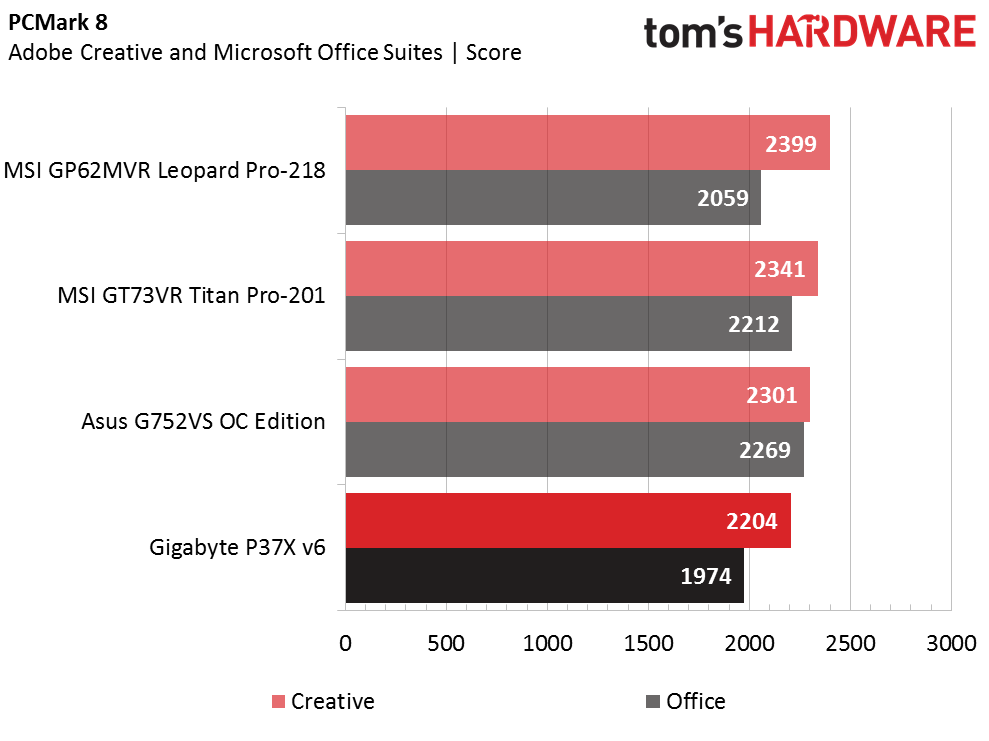Gigabyte P37X v6 Gaming Laptop Review
Why you can trust Tom's Hardware
Synthetic And Productivity Benchmarks
Today's review compares Gigabyte's P37X v6 to three other Pascal-equipped systems: the previously-reviewed Asus G752VS OC Edition, MSI's GT73VR Titan Pro-201, and the MSI GP62MVR Leopard Pro-218. We’ll be reviewing the latter two systems as well, so stay tuned!
The Asus G752VS features an Intel Core i7-6820HK, 32GB of DDR4-2400 memory, an Nvidia GeForce GTX 1070, a 256GB SSD, and 7200 RPM 1TB HDD. The Titan Pro is equipped with a Core i7-6820HK, 64GB of DDR4-2400 memory, a GTX 1080, two 512GB SSDs running in RAID 0, and a 7200 RPM 1TB HDD. Finally, the Leopard Pro-218 features a Core i7-6700HQ, 16GB of 2133 MT/s memory, a GTX 1060, and a 7200 RPM 1TB HDD.
3DMark
We tested 3DMark's Fire Strike, Fire Strike Extreme, and Time Spy. Fire Strike render its scenes in 1080p, while Fire Strike Extreme and Time Spy render in 1440p, but all subsequent tests are taken at the P37X v6's native 4K resolution unless stated otherwise. The Gigabyte falls just short of its GTX 1070-equipped competitor, the Asus G752VS OC Edition, because it has a less powerful CPU and less memory. Against the MSI Leopard Pro, which sports a GTX 1060, the P37X v6 delivers a strong lead both graphically and overall, but the physics scores are almost identical.


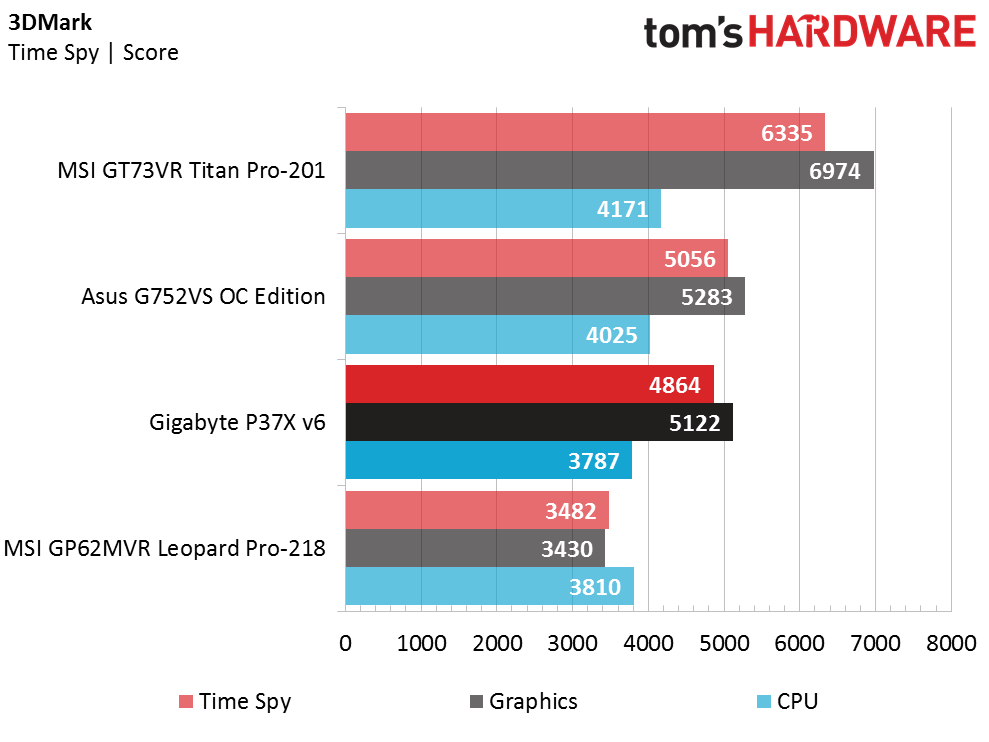
Cinebench R15
Cinebench measures CPU rendering power as well as GPU performance with OpenGL. None of these laptops is particularly advantaged in single core performance (the P37X v6 and Leopard Pro have the i7-6700HQ CPU, and the G752VS OC Edition and Titan Pro contain the i7-6820HK). The gap between the two processors widens in multi-core rendering. During the OpenGL shading test the difference between the P37X v6 and the Asus is only about 4.8%, and it outperforms the MSI Leopard Pro by 7.2%, and trails MSI's Titan Pro by 27.4%.
CompuBench
We use CompuBench to measure a system's video processing and integer performance. CompuBench proved to be heavily GPU focused; the P37X v6 lags only slightly behind the G752Vs OC Edition, which has more memory and a stronger CPU. The Titan Pro 201, however, holds a massive performance increase over both, thanks to its GTX 1080 GPU.
Disk Speed
Disk Speed is used to measure a system’s random and sequential read/write speeds. 4KB random transfers are measured in IOPS, while 128KB sequential transfers are measured in MB/s. We run Disk Speed at queue depth of two (QD2) on the system's primary drive, recorded over four minutes of activity. Products based on TLC flash will show realistic, degraded performance.
In this case, it's a 512GB Samsung SM951 NVMe SSD. The SM951 scores below the G752VS OC Edition's 512GB Toshiba XG3 in 4K random speeds, but exceeds it in 128K sequential speeds. The Gigabyte doesn't reach anywhere near the Titan Pro's SM951 RAID 0 configuration, but it naturally outscores the Leopard Pro's HDD.
Get Tom's Hardware's best news and in-depth reviews, straight to your inbox.
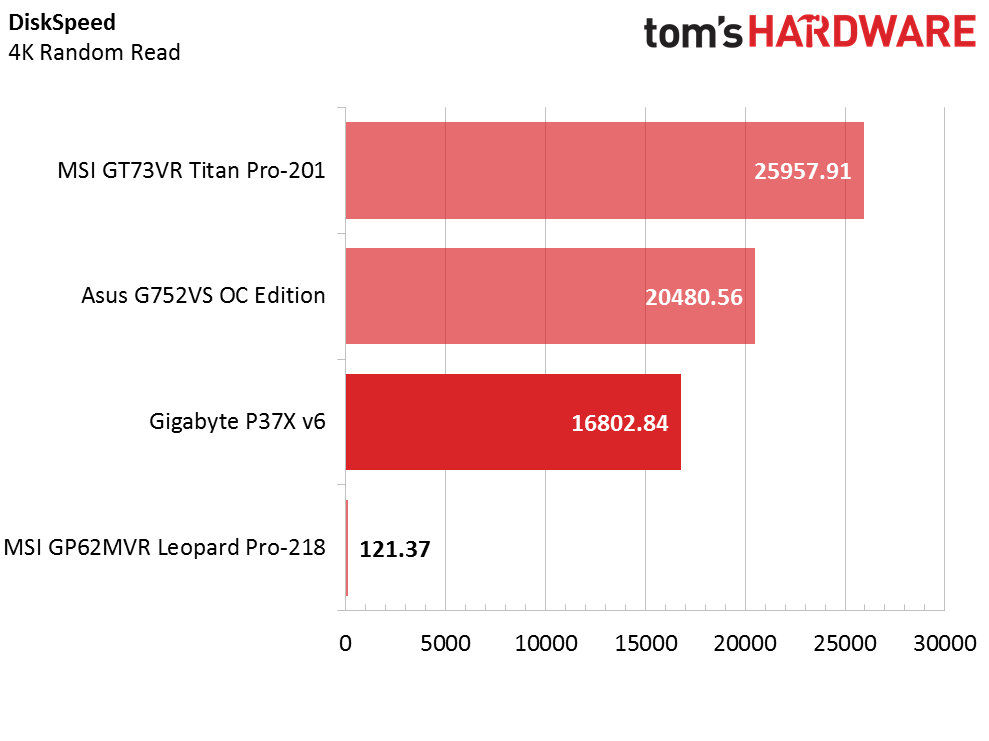
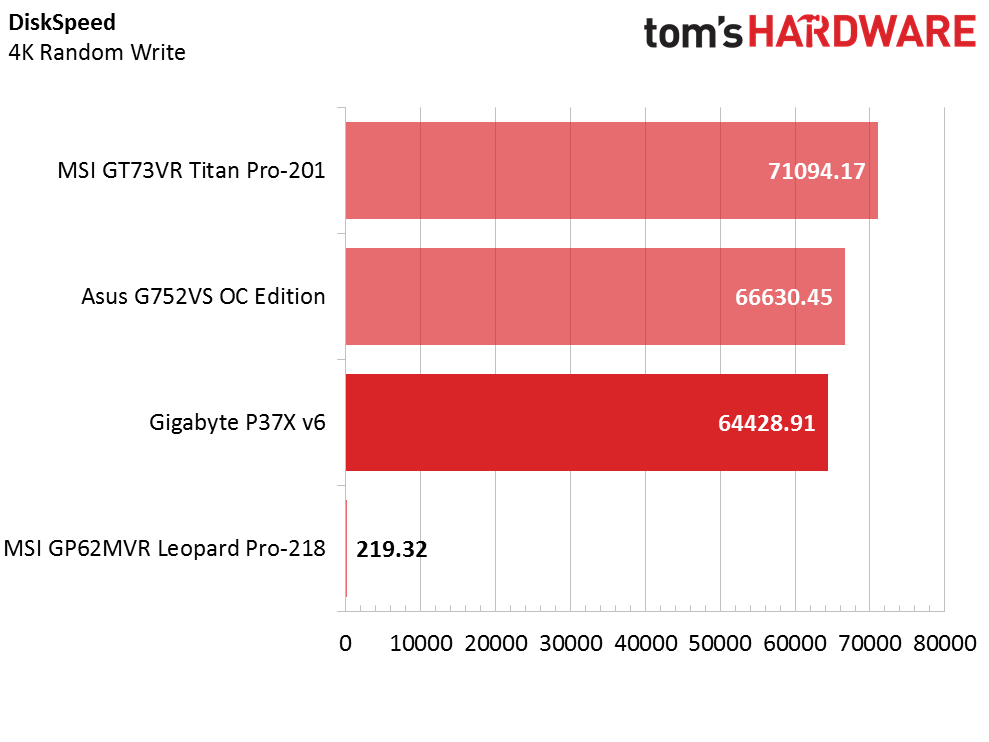
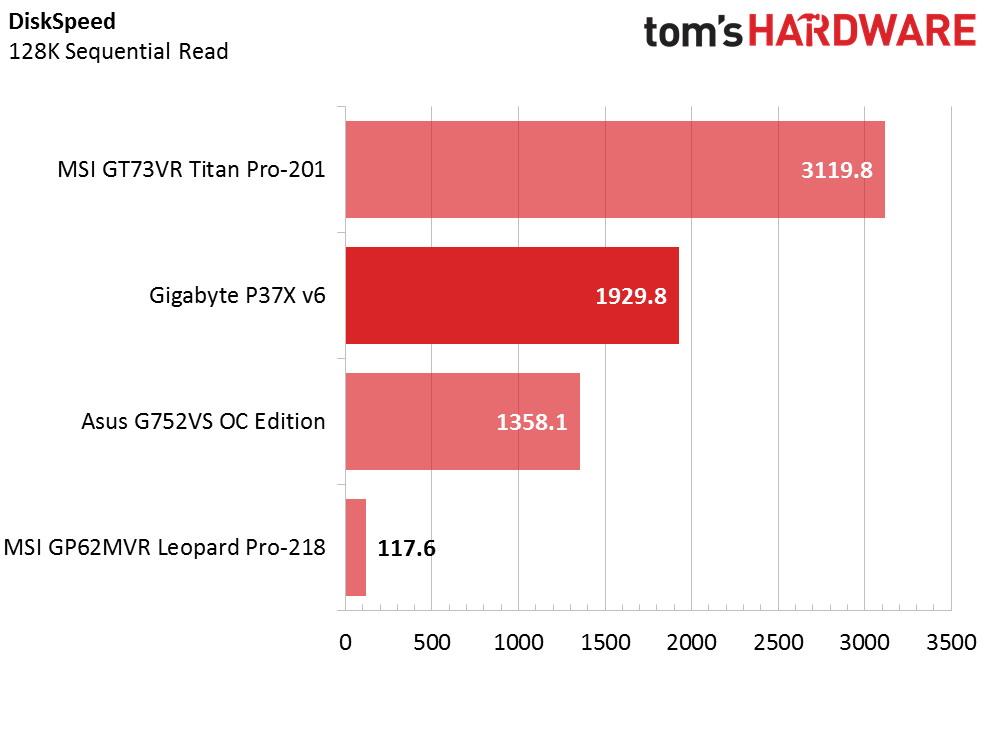
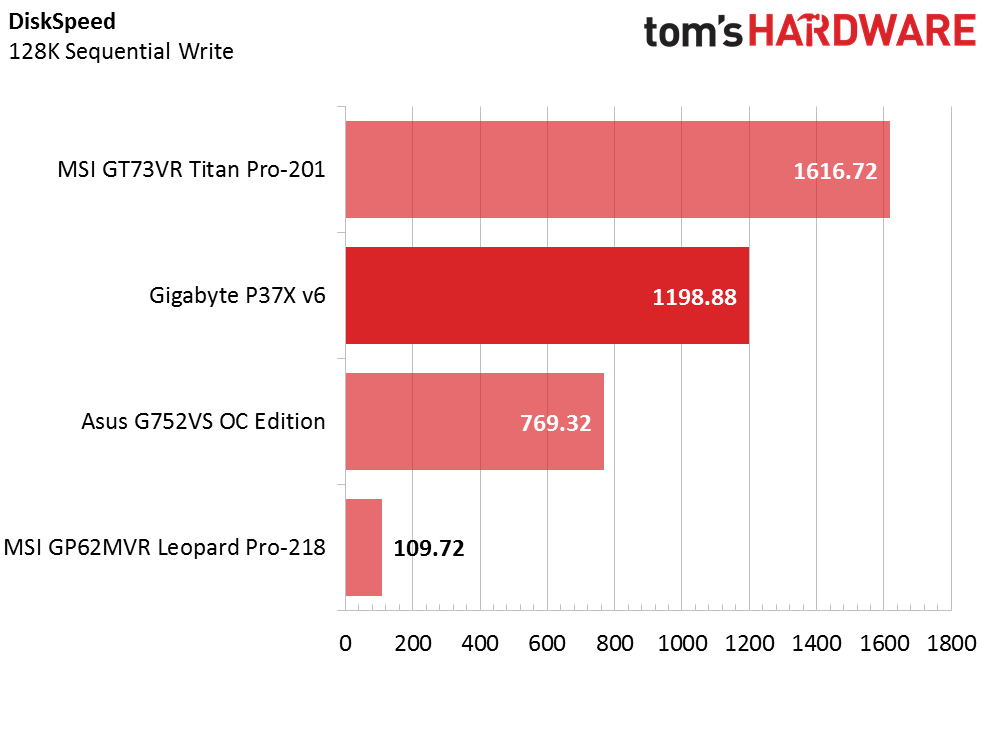
PCMark 8
Our PCMark 8 tests use Adobe Creative Suite and Microsoft Office Suite workloads to mimic the type of usage a PC may experience during a typical home, office, or creative workload. The Gigabyte laptop doesn't perform as well as the Asus because of its less powerful processor; the difference widens even more compared with the Titan Pro, which has a more powerful CPU and GPU. All of the differences here are not very pronounced, however.
Also note that, after repeated tests, the Leopard Pro stubbornly outscored all of the higher end systems. We'll revisit the results in the future if anything changes. At this point, we've re-tested and accounted for variables like base and boost clock frequency, vendor drivers, and thermal throttling.
Current page: Synthetic And Productivity Benchmarks
Prev Page Introduction And Product Tour Next Page Gaming Benchmarks-
wifiburger cooling is ok, granted I have last year model with old i7 , 980m, you prob wouldn't want to game on it in small room without AC, the heat output is like small heater you'll prob pass out after 2hours of gamming without some short of room fan / ventillationReply
i was playing mine in tropical climate 37 degree ambient, small room for hours -
AnarchoPrimitiv How come you guys never mentioned that the P37X is way thinner than the other laptops tested...I'd want the gigabyte (better yet auros) over ant other gaming laptop because it doesn't have some ridiculous red and black "gamer" look...I can't stand itReply -
djb06461 I bought my P37x one year ago, probably not V6, and I regret every cent spent on it.Reply
It is NOT a gaming laptop at all. The heat sink design is totally a joke, it cannot even handle mid setting of overwatch or diablo 3. It hot like a saute pan and slow like a saute pan too.
I do have a gigabyte grapic card in my desktop and it is good. They are really doing terrible job on this laptop. Every minute on game is miserable.
Never buy laptop with 'slim' design, lesson learned in a hard way.
